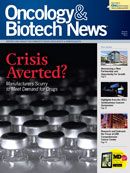Shedding More Light on Identifying HER2
Breast cancer researcher Edith A. Perez, MD, is aiming to present more detailed study findings at national conferences later this year that will help clinicians better identify patients who would benefit from HER2 targeted treatment.

Breast cancer researcher Edith A. Perez, MD, is aiming to present more detailed study findings at national conferences later this year that will help clinicians better identify patients who would benefit from human epidermal growth factor receptor 2 (HER2)-targeted treatment.
“We need to have a better understanding of how to select patients for HER2 therapy,” Perez said during a presentation. “I think our results will be able to settle this issue as far as we can.”
Perez, deputy director of the Mayo Clinic Comprehensive Cancer Center in Jacksonville, Florida, and a professor at its medical school, has already published her group’s analysis of more than 2000 patients to determine whether fluorescent in situ hybridization (FISH) or immunohistochemical (IHC) testing is more predictive of HER2.
She said the data from the North Central Cancer Treatment Group N9831 Adjuvant Trial appear to show that the tests are “equally predictive” of the benefit of HER2 therapy in the adjuvant setting; however, opinion varies among practicing oncologists about what constitutes a positive finding of HER2.
Studies suggest up to 20% of current HER2 testing worldwide may deliver false positives or false negatives, according to the American Society of Clinical Oncology (ASCO).
In 2007, ASCO and the College of American Pathologists recommended new guidelines for defining HER2 positivity. The guidelines consider a positive HER2 result to be IHC 3 staining >30% or a FISH ratio of >2.2; a negative result is defined as an IHC staining of 0 or 1 , a FISH result of >4.0 HER2 gene copies per nucleus, or a FISH ratio of >1.8. Previously, the criteria were IHC 3 staining >10% and a FISH ratio ≥2.0 gene copies per nucleus.
Perez said about 1.7% of patients in her trial, or >500 patients annually in the United States, would not have met the criteria for adjuvant trastuzumab treatment under the 2007 guidelines.
“Our data suggest eligibility for adjuvant trastuzumab may be based on the original definition of HER2 positivity,” she said in a slide. During her discussion, she noted, “There has been a confusion relative to the reason for the ASCO guidelines in the US.”
There are also some other areas of controversy, including the potential role of other markers and whether there is tumor heterogeneity that may impact the reported 20% discordance results for IHC and FISH. Data related to markers are forthcoming later this year, and data related to the prevalence of tumor heterogeneity are also expected this year.
Perez said she hopes to present results at the 2011 ASCO Annual Meeting in June and the San Antonio Breast Cancer Symposium in December.
She also said she hopes to complete accrual for ALTTO (Adjuvant Lapatinib and/or Trastuzumab Treatment Optimization), a global trial she is co-leading that compares the 2 targeted treatment options for HER2-positive disease.
Perez said investigators need only about 70 additional patients to finish the phase III trial, which has involved more than 8200 patients, Edith A. Perez, MD including 830 in North America.




